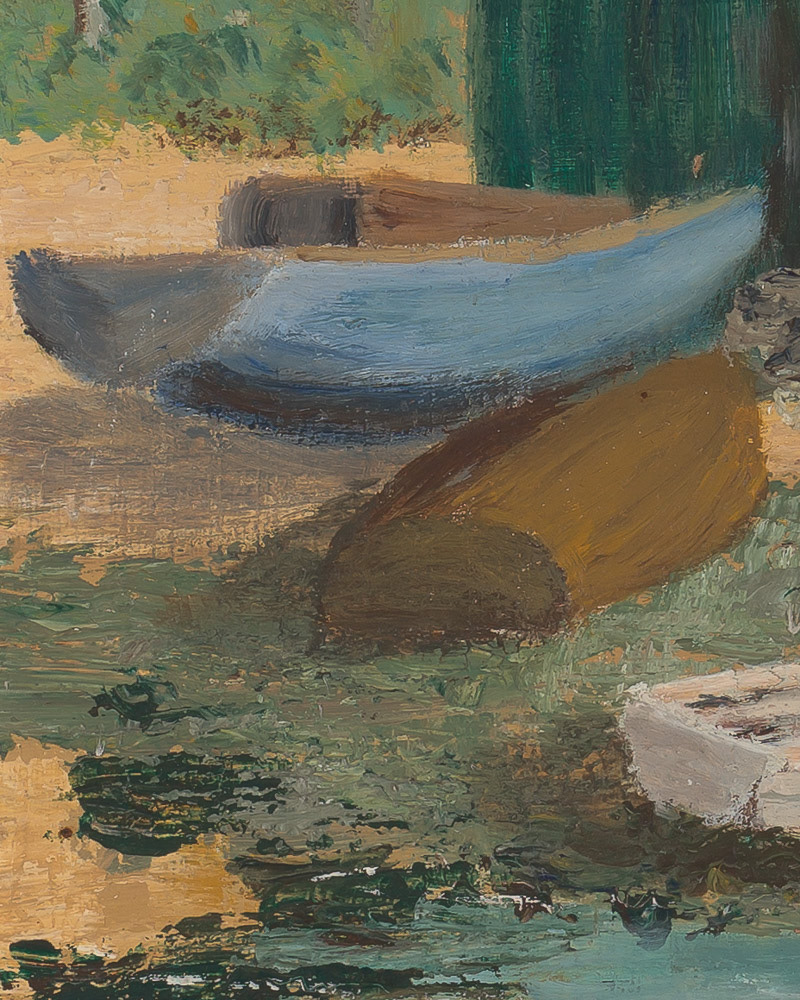...how to reliably eliminate reflections when copying paintings.
Photographing paintings with highly glazed or reflective surfaces often gives rise to distracting reflections. While the human eye tends to accommodate this, when viewing a very textured and reflective oil painting, for example, it can become quite intrusive when viewing a reproduction on a material which one would expect to be matt, such as a Giclee print, or when viewing the image on a monitor screen.
Using a careful technique employing polarising filtration material over all light sources and an additional polarising filter over the camera lens, virtually all random reflections can be removed from the final reproduction, rendering the work clearer and more easily readable.
Please take a look at the comparisons below to see the technique in action.
Please take a look at the comparisons below to see the technique in action.
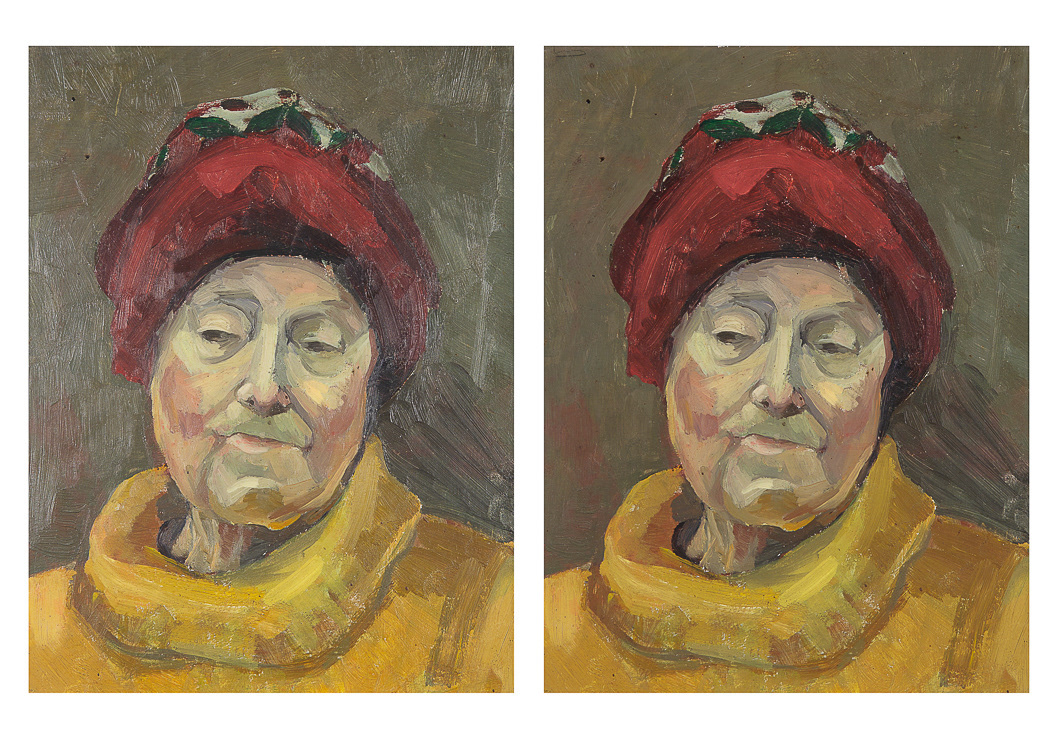
This heavily textured, varnished oil painting throws up a lot of reflections when lit in the usual way (left). Using the cross polarisation lighting technique, these distracting reflections can in most cases be totally eliminated (right).
Here is another sequence:
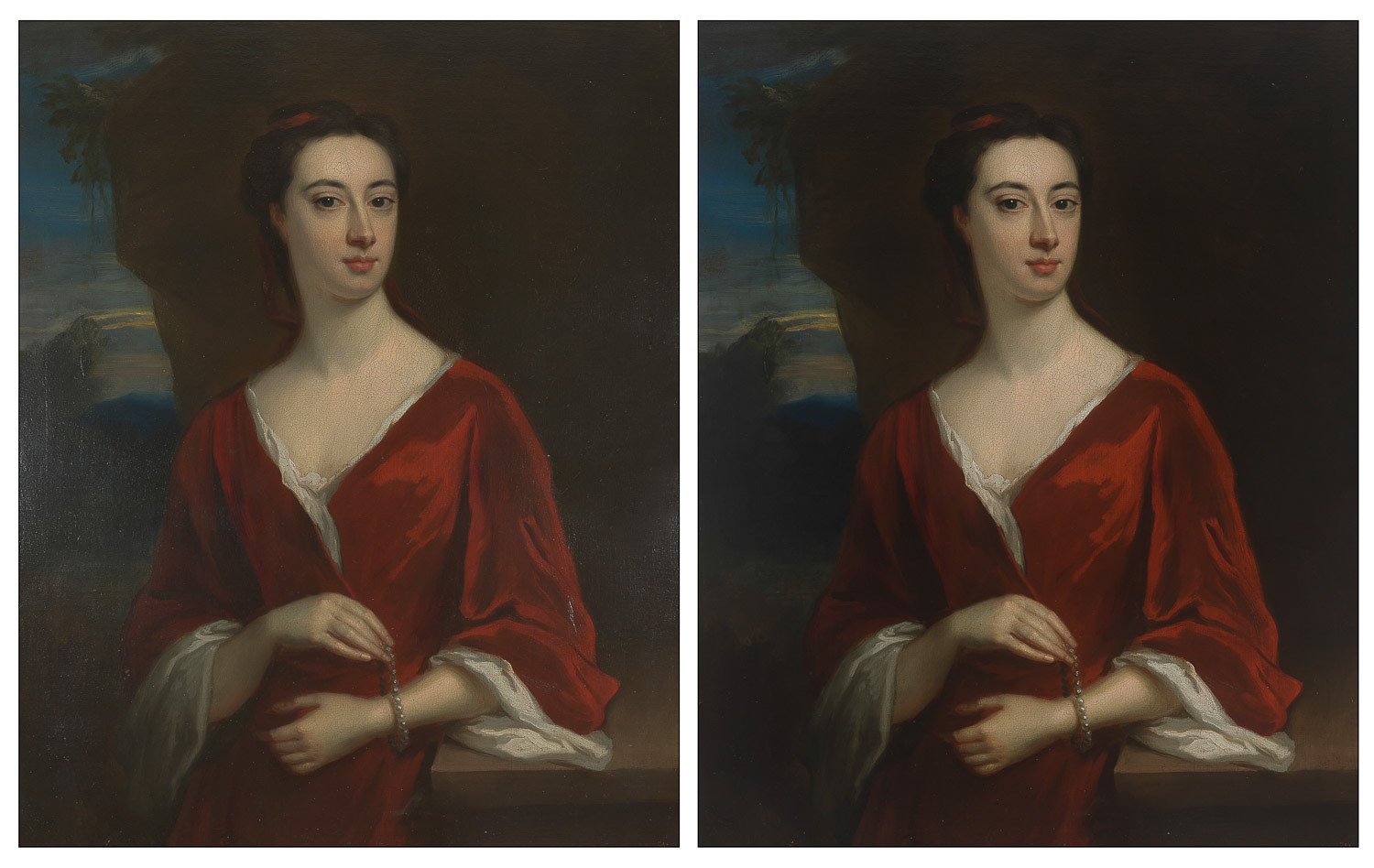
Cross polarisation (right) eradicates stray reflections and removes any flare when copying 2D artworks

Cross polarisation (right) results in a slightly "crisper" looking image with less flare created by highly glazed textured surfaces in particular.
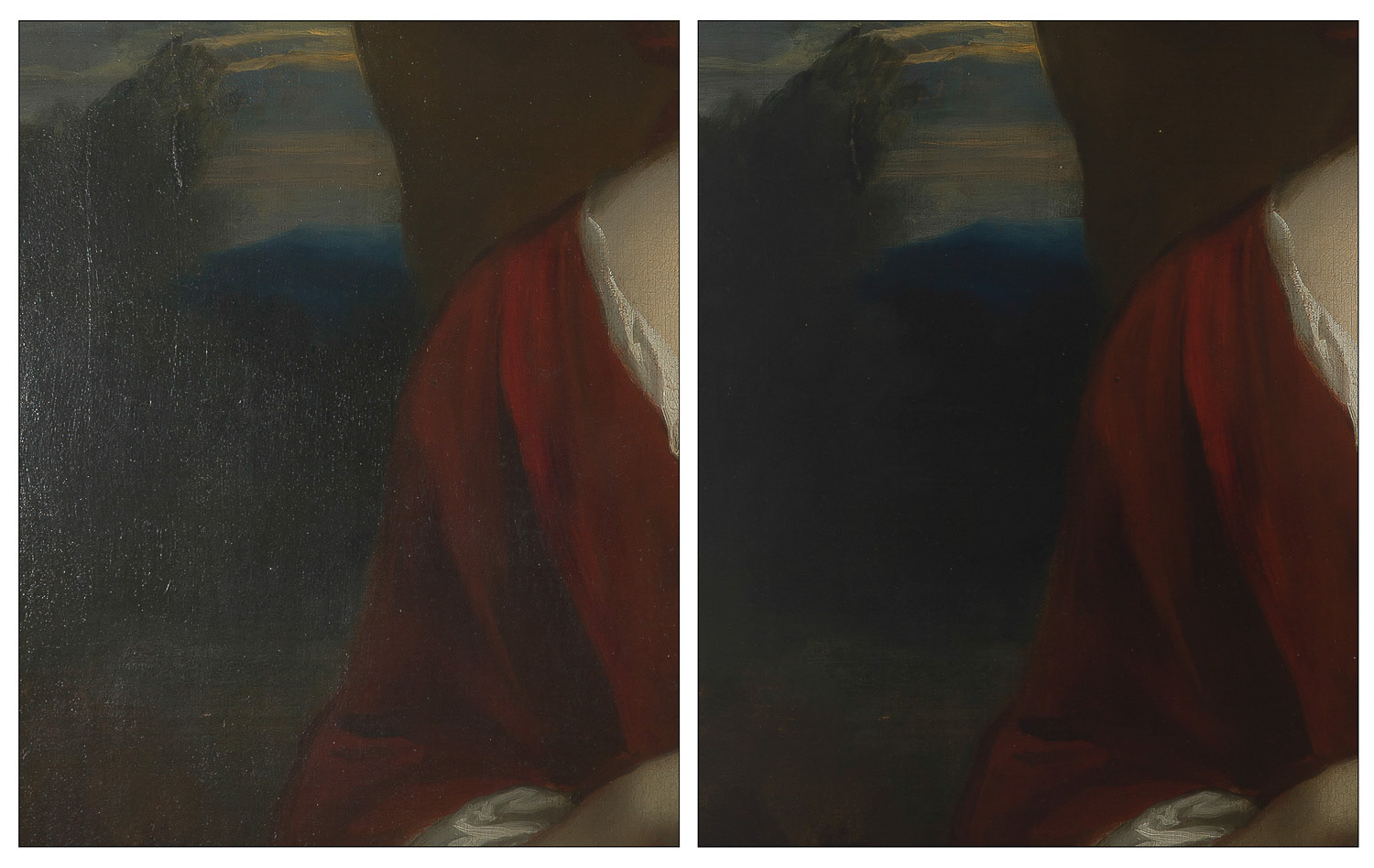
Cross polarisation (right) can eliminate all stray reflections from an image, which can often result when canvases are unevenly stretched.
A compromise ... in the case of heavily textured oil paintings, or watercolours on paper with a pronounced grain, the cross polarisation process may actually be too good, i.e. with the removal of all reflections on the high points of the surface, some of the textural qualities of the original can become lost, resulting in a rather flat appearance. One solution in this case can be to apply the cross polarisation treatment at a reduced level: the amount can be controlled by rotating the on-camera polarising filter, so it can be set back from 100 per cent to actually encourage more reflections to indicate texture. However, that risks enabling flare or stray light which can weaken colour saturation. My preference is to keep the cross polarisation at its full setting, but light the picture plane from one side only (the orthodox approach being to light from both sides to enable uniform illumination across the surface). This creates useful shadows which are cast by the high points of the paint surface, in the case of oils, or the paper tooth, when copying works on paper; in both cases texture is better emphasised. There will be some sacrifice in terms of even-ness of illumination but careful post-processing can mitigate this to some extent.
Please take a look at the series below which demonstrates how one sided lighting, combined with full cross polarisation treatment, can generate a more textured rendering without the risk of flare or stray reflections. In a perfect world, it is worth photographing such works with both methods; the fully polarised version makes for a useful catalogue-type record of the work, while the textured version can help to describe how the work might look in less controlled context, e.g. someone's home where it may well be lit from one side only.
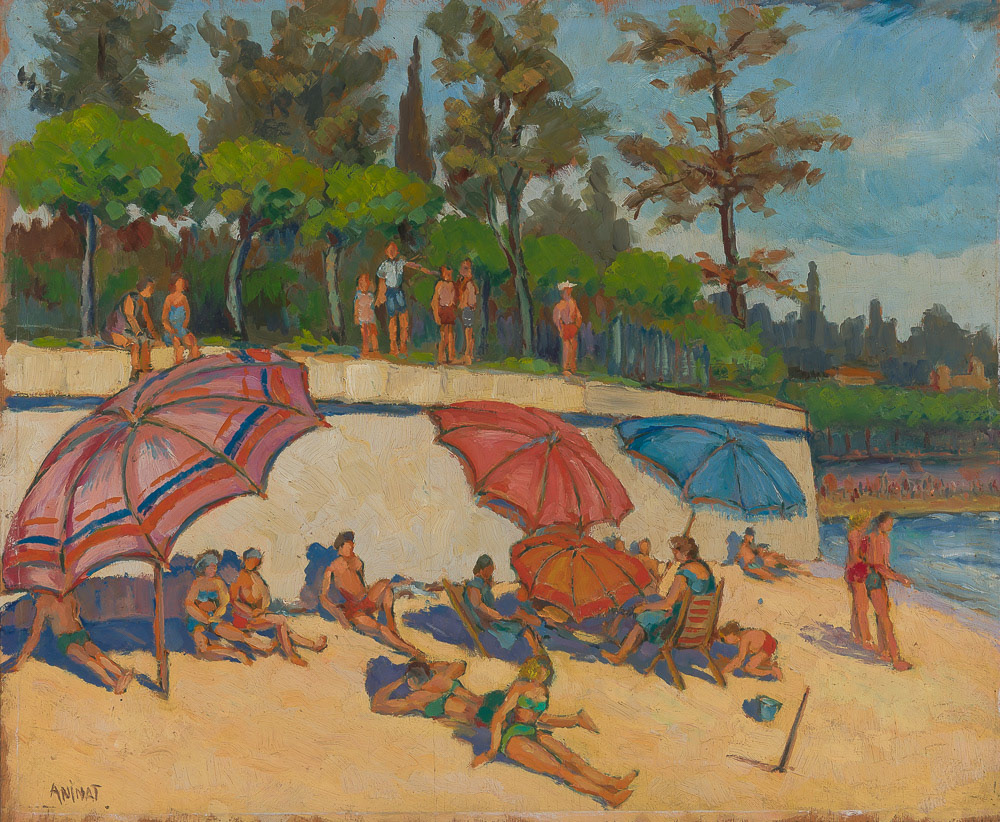
Cross polarisation with light from both sides
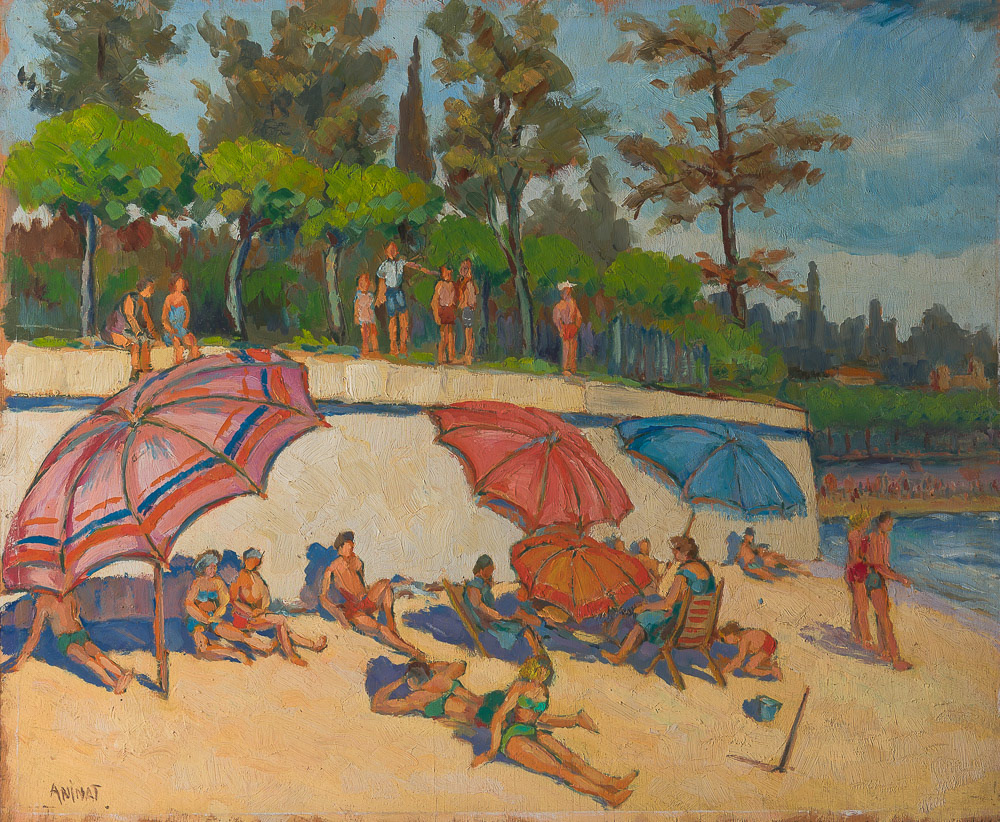
Cross polarisation with light from one side only

Cross polarisation with light from both sides

Cross polarisation with light from one side only
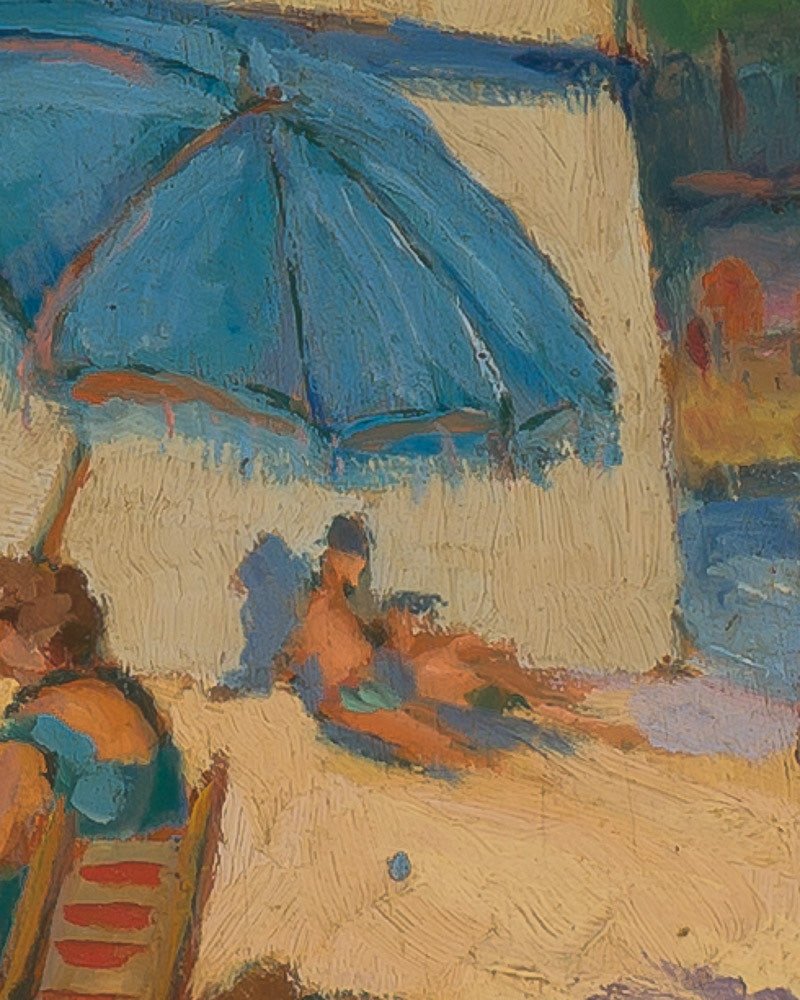
Cross polarisation with light from both sides

Cross polarisation with light from one side only

Cross polarisation with light from both sides
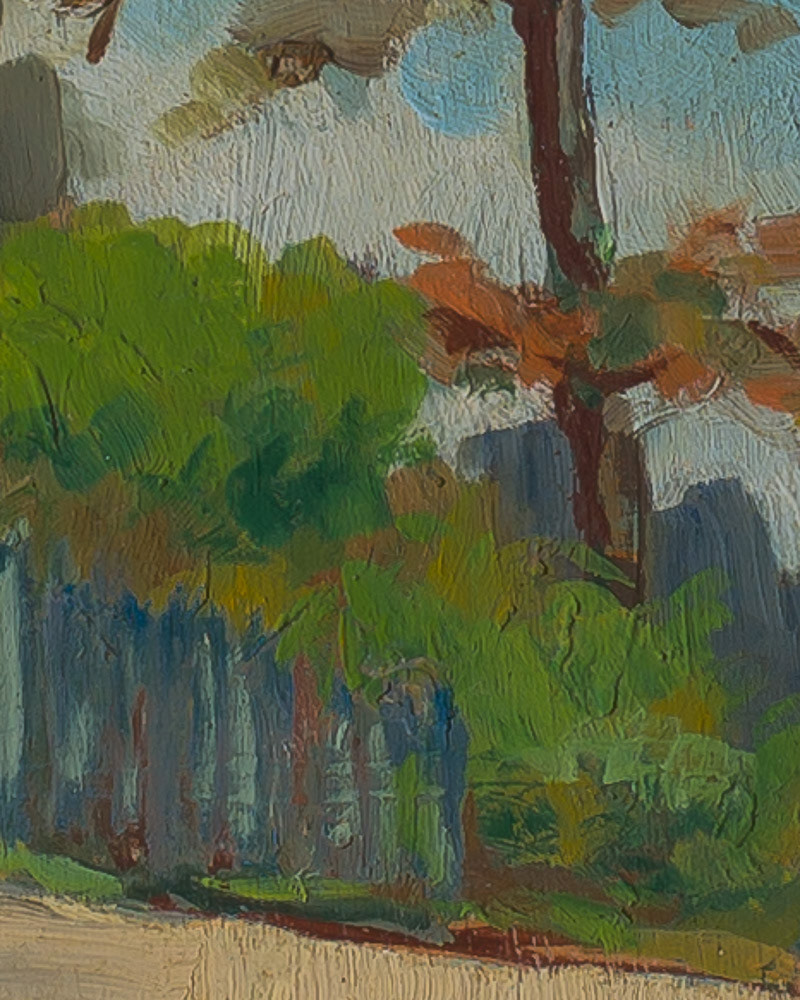
Cross polarisation with light from one side only
When cross polarisation can't be used... cross polarisation cannot unfortunately be used with works which make use of metallic or iridescent paints and inks: it succeeds in removing all the luminance you would expect to see in such areas. In some situations, a cross polarised version can be combined with a standard copy using masks in post-processing to keep the polarisation effect just off off any metallic areas:
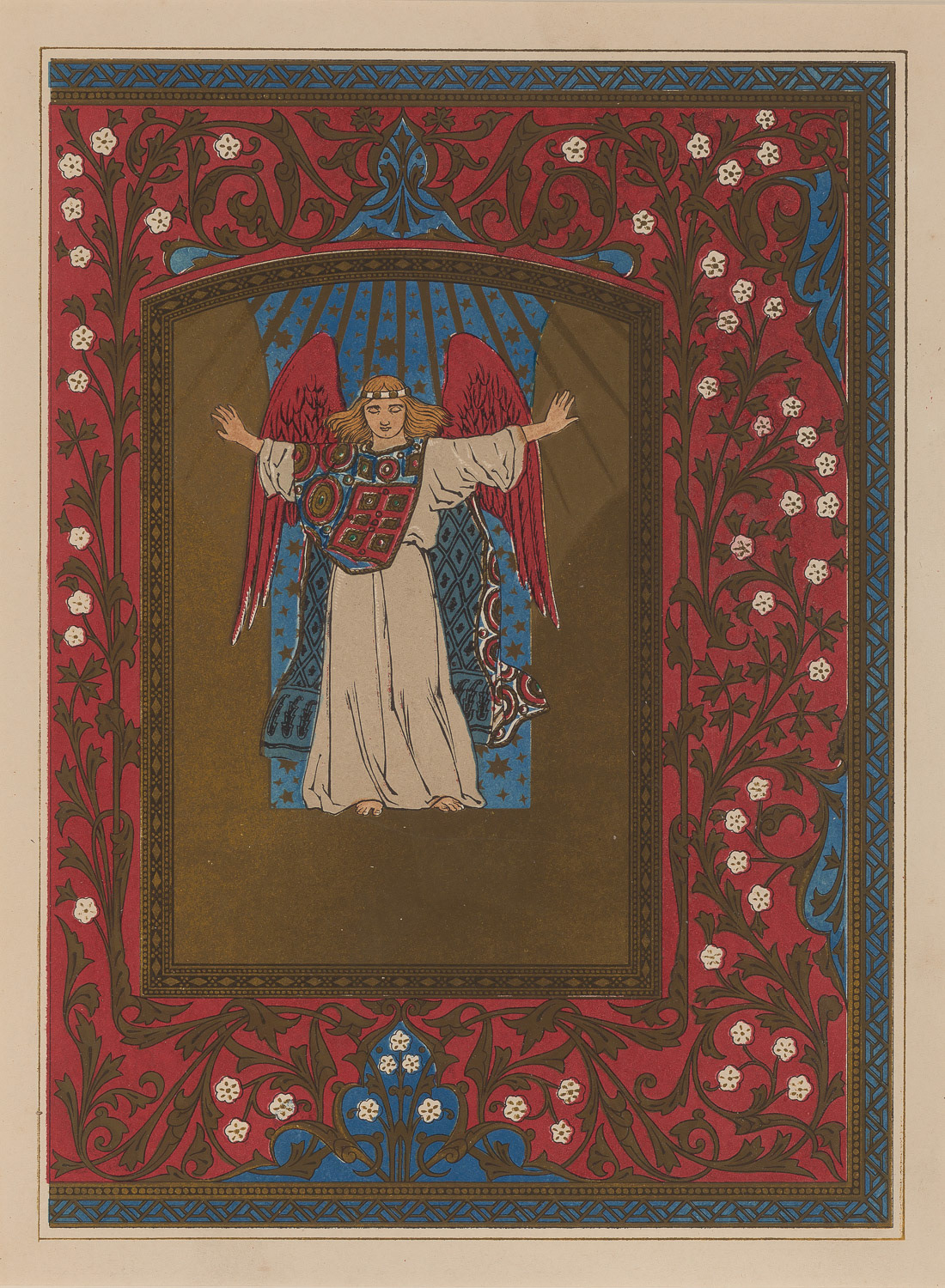
Unfortunately the cross polarisation treatment renders areas of metallic or iridescent pigment very dull looking...

While the version without cross polarisation perhaps lacks the depth of colour saturation which that treatment can render, the luminance of the metallic gold is preserved.
Two more comparisons: in the copy of the engraving of the rabbits below, while the difference is subtle, the cross polarised version shows slightly improved tonal separation, noticeable in the shadow areas, thanks to the reduction in light scatter by the process. Meanwhile the oil painting of beach combers below shows how the reduction of surface reflections with the cross polarisation treatment can help to improve the crispness of the original. For online viewing, at least, this can really help to describe the original in the most informative way.
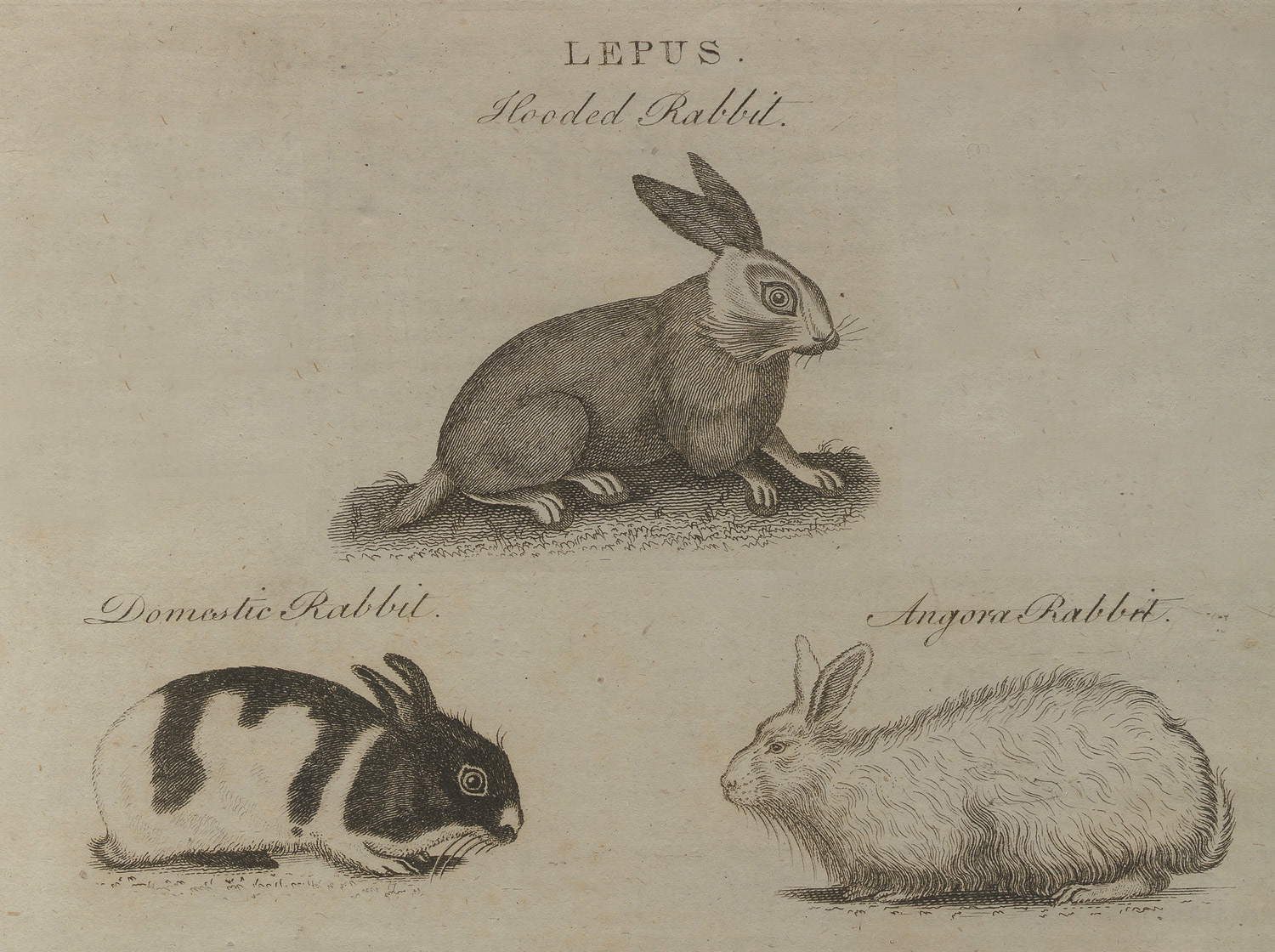
Standard lighting

Cross polarisation
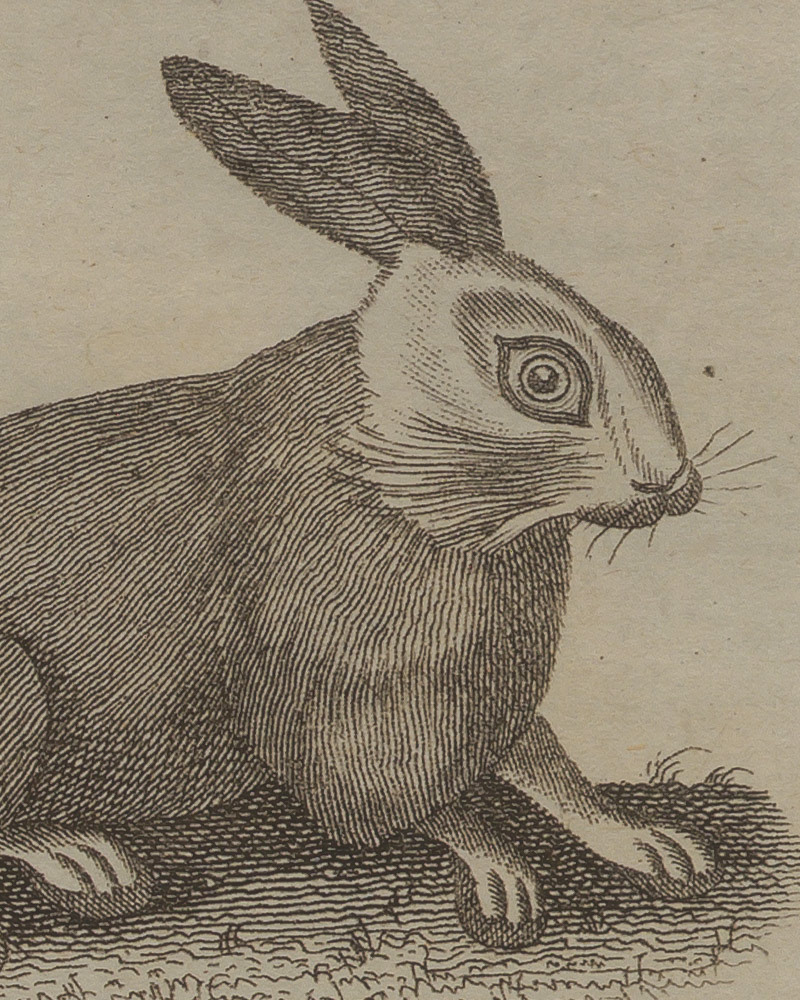
Standard lighting

Cross polarisation
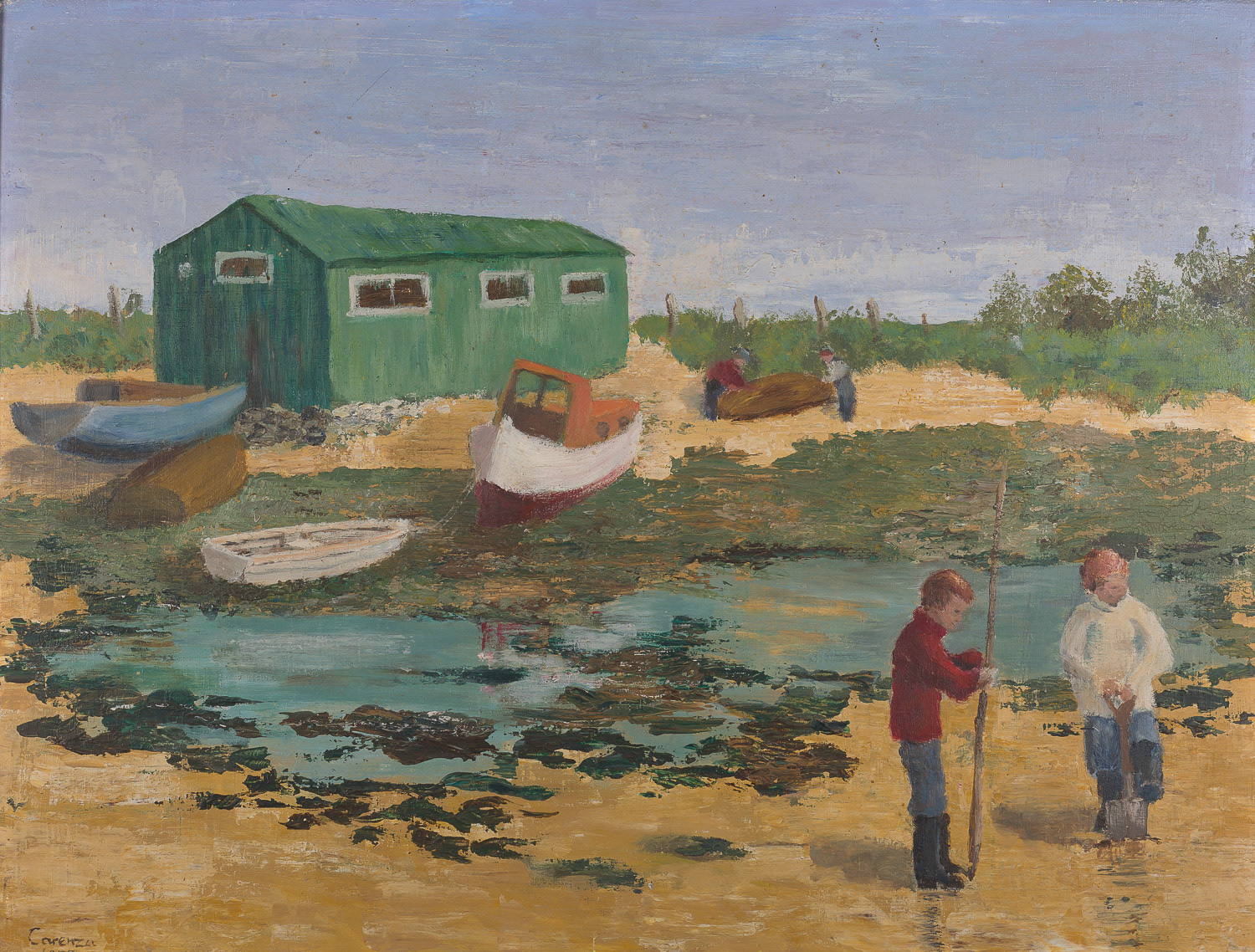
Standard lighting

Cross polarisation treatment

Standard lighting
